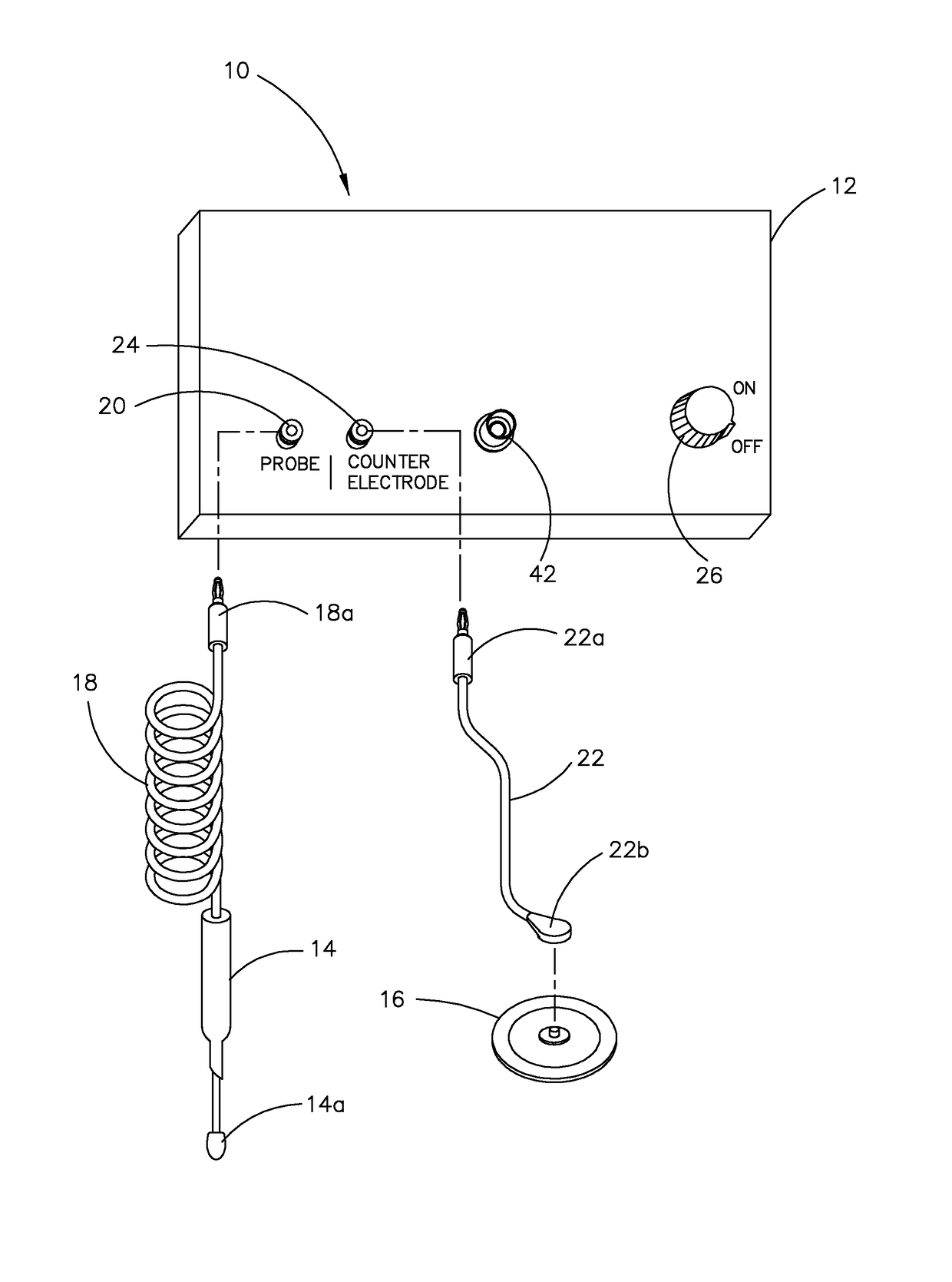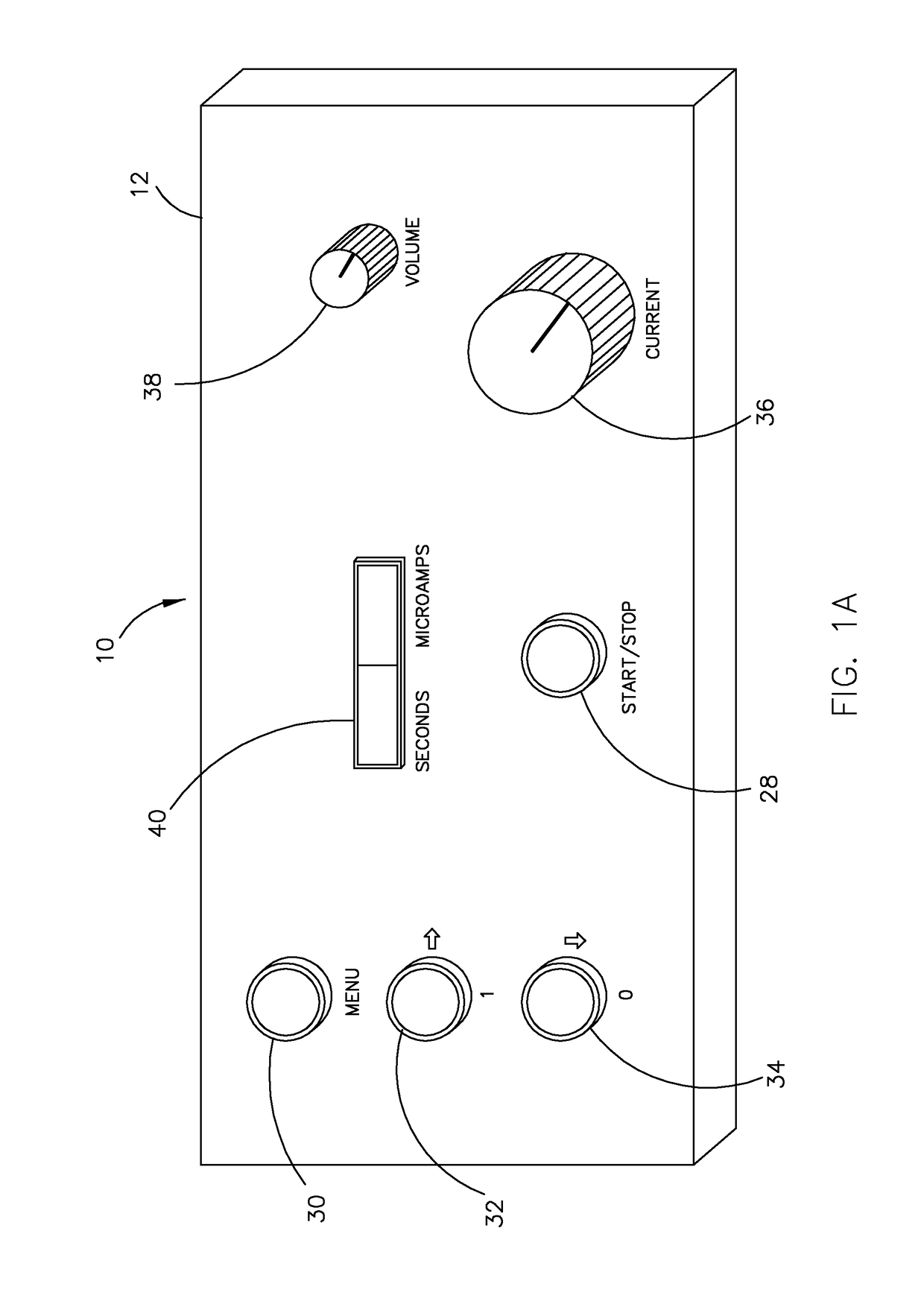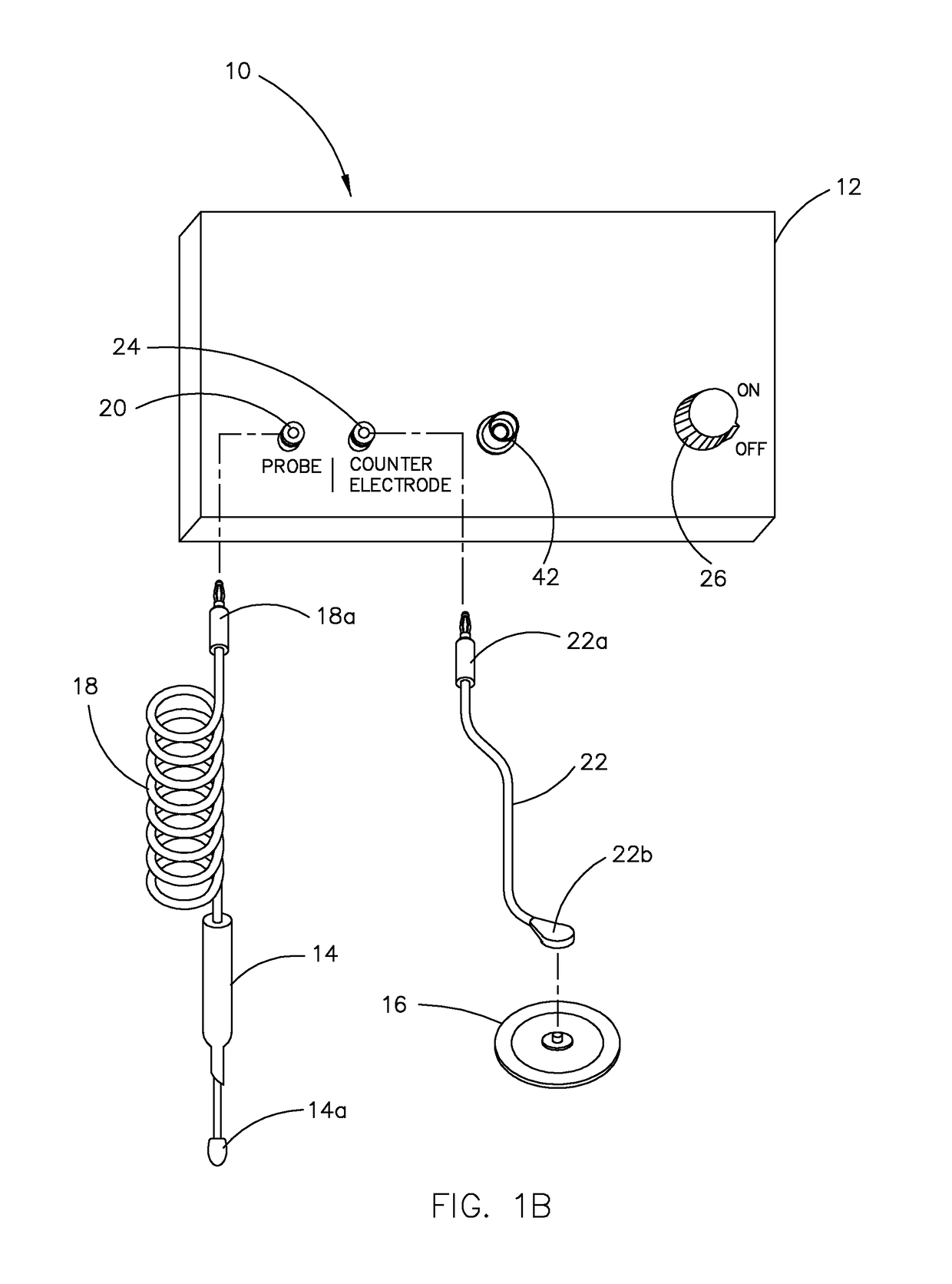Microcurrent device for the treatment of visual disease
a microcurrent device and visual disease technology, applied in the field of electrical stimulation therapy devices and electrotherapy, can solve the problems of protein synthesis and transport degradation, reduced levels, and loss of cell function of retinal cells, and achieve the effect of stabilizing or improving macular degeneration and other visual diseases
- Summary
- Abstract
- Description
- Claims
- Application Information
AI Technical Summary
Benefits of technology
Problems solved by technology
Method used
Image
Examples
Embodiment Construction
[0033]The present invention is directed to an electrotherapeutic device that generates at least one waveform for use in microcurrent stimulation therapy to treat patients suffering from macular degeneration and other visual diseases. The device includes a signal source that is directly controlled using a digital modulation technique to generate a waveform that is delivered to tissue of an eye region in accordance with a protocol for treating a visual disease. The spectral characteristics of the waveform (such as various combinations of modulated waveform parameters and / or greater frequency content, as discussed below) are believed to result in the stabilization or improvement of macular degeneration and other visual diseases.
[0034]While the invention will be described in detail below with reference to various exemplary embodiments, it should be understood that the invention is not limited to the specific device configuration, waveforms, waveform parameters (pulse width, pulse period...
PUM
 Login to View More
Login to View More Abstract
Description
Claims
Application Information
 Login to View More
Login to View More - Generate Ideas
- Intellectual Property
- Life Sciences
- Materials
- Tech Scout
- Unparalleled Data Quality
- Higher Quality Content
- 60% Fewer Hallucinations
Browse by: Latest US Patents, China's latest patents, Technical Efficacy Thesaurus, Application Domain, Technology Topic, Popular Technical Reports.
© 2025 PatSnap. All rights reserved.Legal|Privacy policy|Modern Slavery Act Transparency Statement|Sitemap|About US| Contact US: help@patsnap.com



